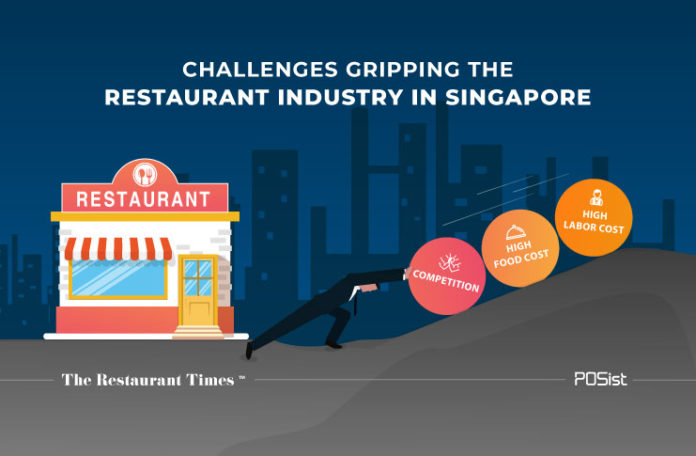The Singapore F&B space has witnessed massive growth in the past few years. And with the augment of high competition, restaurants in the country are striving hard to be ahead of the other competitors in the country. Coupled with the stiff competition that persists in the restaurant industry in Singapore, high labor and food cost further affect the overall business. This article discusses the challenges faces by the F&B industry in Singapore and how to overcome them.
Top Three Challenges Plaguing The Singapore Restaurant Industry
Staying afloat in the Singapore restaurant industry isn’t an easy task. Read below and know about the top challenges gripping the restaurant industry in Singapore and how you can overcome them seamlessly.
1. Severe Competition
The sprawling Singapore restaurant industry has increased competition by leaps and bounds and this is one of the major reasons for the increasing number of restaurants shutting down in Singapore.
No matter how much you try, unless you analyze the market and gauge what your competitors are doing it will be very different for you to sustain the competition. Here comes the importance of proper market research and industry analysis. Know the offers and the discounts that your competitors are offering, the events they are hosting, and the marketing campaigns they are running. Once you are aware of what they are doing, you can then craft your strategies to ensure that you are ahead of your competitors.
2. Excessively High Labor Cost
Singapore restaurant industry suffers from a high employee attrition rate. An average restaurant in Singapore spends nearly 29.3% of its total operating expense on remunerations.
In addition to this, the labor attrition rate is as high as 70%. This clearly shows that restaurants strive hard to retain employees by offering them higher wages.
While this is one of the major challenges that a restaurant in Singapore faces, there are ways by which they can effectively counter this pressing concern of high labor costs. Primarily, by providing comprehensive training sessions and ensuring a great work environment. While training is important for new employees, don’t forget the need to refresh the memory of the old employees. Provide each staff with a handy training manual, which they can turn to during a sticky situation on the floor of the restaurant.
Make sure that you acknowledge your employees’ efforts and offer them rewards, incentives depending on their performance. You can very effectively retain your old and veteran employees by making them the stakeholders of your restaurant.
3. High Food Cost
Singapore has a severe dearth of homegrown food produce. Almost 90% of all the food products in Singapore are imported. This automatically increases the cost of raw materials. One of the best ways to control the rising food cost is to ensure that your generation of waste is minimal.
Leveraging a robust restaurant software that comes with a stock and inventory management module will help you track your stocks like never before. It will give you real-time alerts whenever an item reaches its reorder level, and this will ensure that you don’t order an item that is already available in the inventory. In addition to this, the system will also be equipped to send you real-time alerts whenever an item or before the item reaches its expiry date. This will save you from generating waste in your restaurant inventory, and also from using a product that has been rendered unusable.
Following a standard recipe will also come in handy, and will reduce the instances of faulty dishes to a great extent. This will have a direct impact on the reduction of the generation of kitchen waste which will reduce your overall food cost exponentially.
Analyzing the menu from time to time is extremely important since it will help you to know your best and least performing menu items. Once, you have this understanding you can then revamp your menu to exclude the least performing once to include more variations of the best-performing ones. This will directly have an impact on your food cost since you will not have to maintain the stock of your least performing items, which eventually generates waste.
Considering the challenges that the Singapore restaurant industry strives hard to overcome, take steps accordingly and prepare an effective business plan to counter them effectively. Once you have mastered the art to ace the trick to tackle these problems, then you can be sure to have a blossoming restaurant business.


















